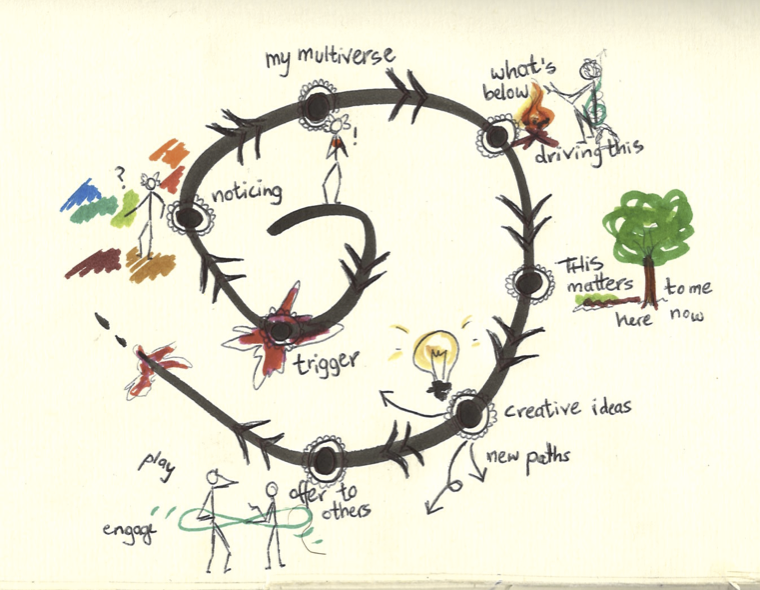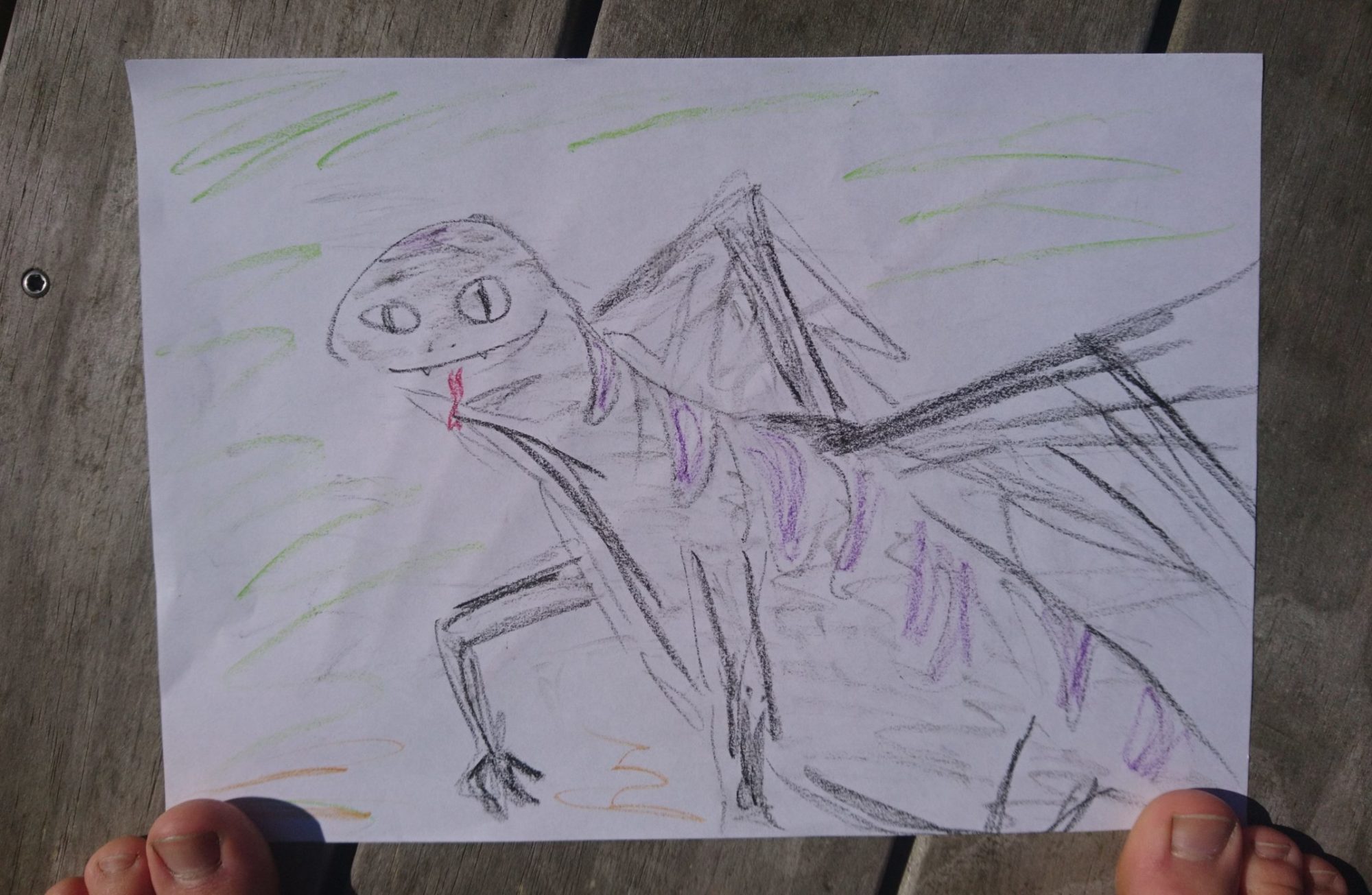When I think about the moments in life that I value the most, they involve a strong sense of engagement (emotions, vibrant body, readiness) and a quality of release or difference – shifts in how I experience the world, when new things (sense of self, perspective, actions, relationship) become possible.
So how does this vibrancy or creativity come about? I think that attending to moments of intense experience – be they positive or negative – is key. When I experience difficulty, get irritated, nervous or confused, that is usually because something important is happening but I don’t fully understand what. I don’t know how to deal well with this situation, but it would make an important difference if I did. Likewise, when I experience strong positive emotion, something very valuable is happening, often new or different from what I have lived before.
The model or path that I present below summarises what I learned by taking the time to relax, pause, be interested and curious around these moments of joy and difficulty. This habit has helped me open up points of narrowing and tension, sense more fully and commit more strongly to what matters to me.
Here an overview of different phases or ingredients I discovered along the path from trigger and sensitivity towards more full and open-ended engagement with the world:

- trigger: a moment of heightened experience – can be positive or negative. An irritation, anger, a judgement, murkiness, a sense of tightness, blur or numbness. Excitement, a rush of liberating sadness (letting go), feeling an alive sense of possibility or attraction.
- grounding/noticing: taking the time, creating a gap, clearing mental space – “no need to act or understand now” – what am I experiencing? what are the facets of this moment, what is coming up? is there any change I can make that would make me feel more comfortable in my body and surroundings? in all senses, things I’d locate ‘inside’ or ‘outside’ of me. breathing, sounds or movement might help (relaxing the shoulders, taking slow, deep breaths, a sigh – if the situation feels right for it, sounding, laying down on the floor, rocking, rolling, resting or stretching parts of the body).
- response-ability/my multiverse: engaging with this dynamic ‘fully as mine’. i can and should do with / through it what is mine to do. both in the sense of not getting distracted by focusing on or blaming others, as well as by taking the liberty to really do what I think is needed and right: how is this meaningful to and affecting me? might be interesting to go back and notice the ‘trigger’ from this perspective.
~ go slow ~ this shift, and the gradual unfolding of noticing can be a very slow process and take a lot of time. many moments, diverse encounters. - reflection/what’s below, driving this: what valuable aspects or sources of strength/delight lie beneath the surface? can I relax my attachment (to positive or negative things) and sense into the situation concerning the message it brings in terms of “this is important to me!”? which quality is this experience inviting me to pay greater attention to, be more welcoming towards, stand in for with my whole self and behaviour, and find support and inspiration for in others?
- commitment/Willensstärke: once there is greater clarity and moments of opening, consciously acknowledge that this is what is central for you (here and now). this is my experience and perspective of this situation. i will use my voice, brains, bodies and whatnot in service of this. I will not get distracted (e.g. thinking about or telling others how they are wrong, fixating on changing their actions; pretending nothing happened, discarding and numbing our self so as to not mis-fit).
- playful/open engagement: as I sit with, focus on this aspect of my experience – what emerges? What is needed, possible or interesting from here? playfully expand your repertoire of sensing and acting. creative ideas and new paths come up with time spent in this attitude. let the process do its work, too. stay focused and take good care of yourself.
- let curiosity speak: share your care and excitement with others. ask them what they care about and why. when we speak and act from a place of curiosity, we invite play and participation.
Recently, I discovered something of a shortcut: when irritated, directly apply curiosity and ask the other what they care about. Trace back the starting point of feeling stuck / annoyed, check if you care about why the move that happened there was important (or made sense) for the other. If you find a bit of that genuine curiosity, express it: “what is it that you care about when you did this?” (or whatever question can transmit your genuine curious impulse). Sometimes it’s not possible because it’s too big / we are stuck, in shock – confused, caught up in emotions. But sometimes it is possible, i think especially in places and at times when we can access trust.
This might also work for joy: when it hits you, find a way to honour and acknowledge the essence of pleasure you found in that moment.
